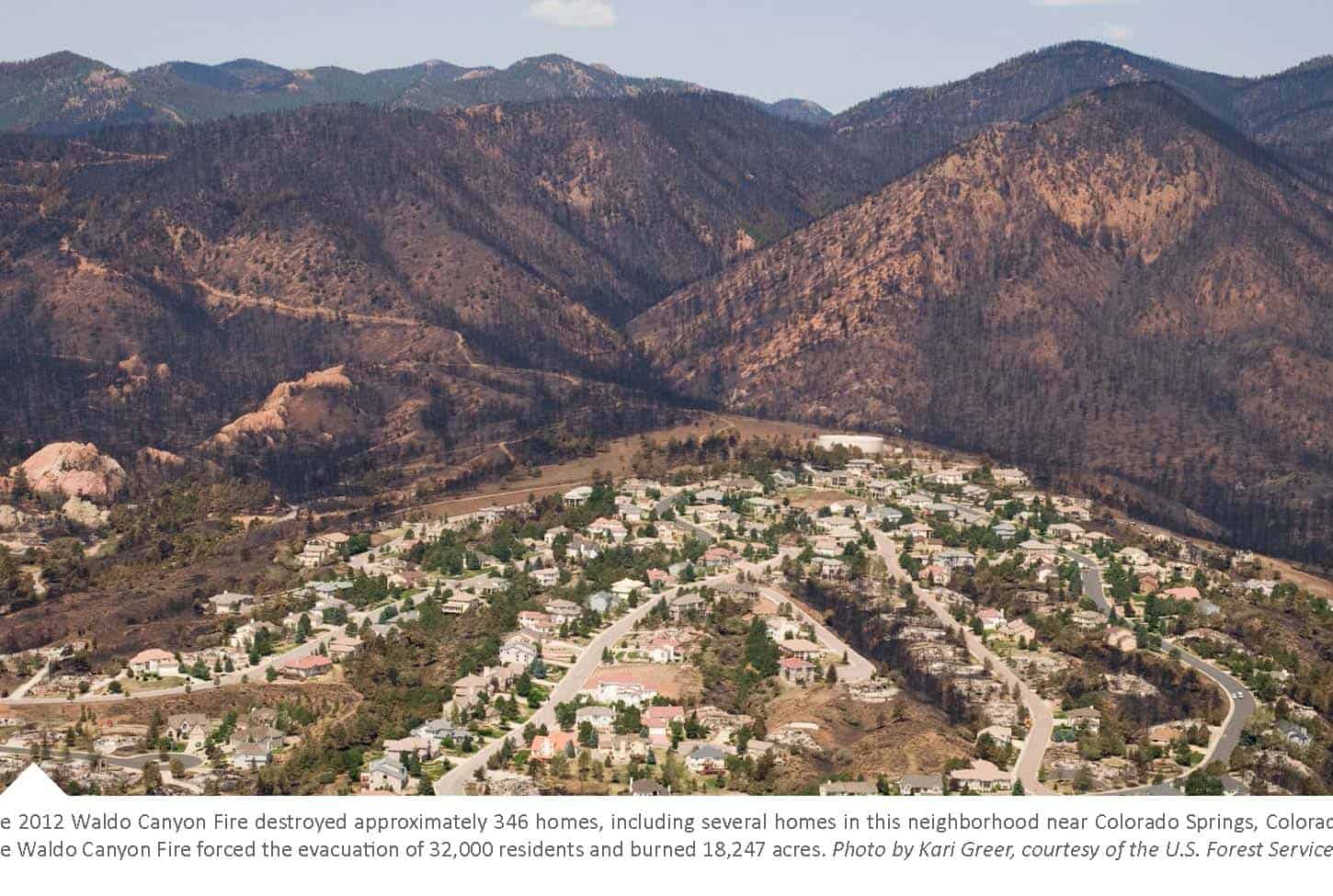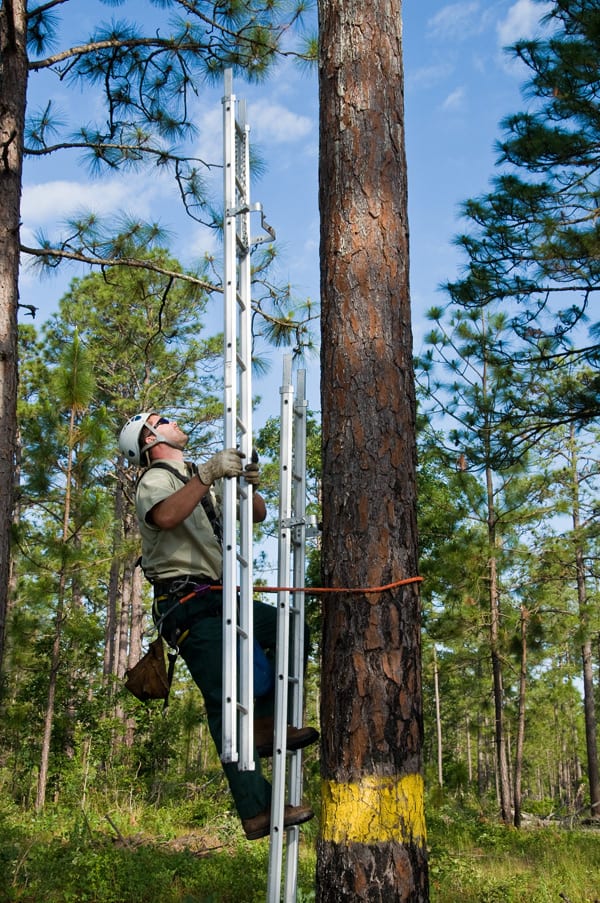The following article, written by Claudine LoMonaco, appeared in the Santa Fe Reporter recently. The article provides a number of details about a series of alleged lies, deceits and questionable business practices concerning Pioneer Forest Products, described as an “under-the-radar company from Montana” that “lied about its work history in its proposal to the federal government, hiding a record of failure and bankruptcy” in order to secure a huge federal contract as part of the Collaborative Forest Landscape Restoration Program (CFLRP). Below are excerpts from LoMonaco’s article:
For the last several years, [Tommie] Martin’s [a supervisor in Arizona’s Gila County and fourth-generation Arizonan] been a member of a precedent-setting collaboration that aims to prevent catastrophic fires. Known as the Four Forest Restoration Initiative, or 4FRI, it brought together environmentalists, industry and the US Forest Service, among others.
Their aim is to thin and restore 2.4 million acres along the Mogollon Rim in northern Arizona, an enormous swath of land on four national forests stretching from Flagstaff to the New Mexico border, and reintroduce the natural fire regime. The idea was to have a business do the work—because the government can’t afford to—and make a profit by selling wood products.
It’s the largest restoration project attempted in the US, and it’s a model for what might happen with smaller, similar projects around the country, like the plan to protect 150,000 acres in the southwest Jemez Mountains just outside Santa Fe, says Bryan Bird, the wild places program director for Santa Fe’s WildEarth Guardians.
“Southwest Jemez is the little stepsister to 4FRI,” says Bird, who’s been watching the Arizona project for years. What happens in Arizona, he says, is likely to play out in New Mexico.
Which makes what’s going on within Arizona all the more concerning, because the project has gone haplessly awry.
In May 2012, the Forest Service regional office in Albuquerque awarded the 4FRI contract to an under-the-radar company from Montana called Pioneer Forest Products. But more than a year later, Pioneer hasn’t thinned a single overgrown tree, because it’s failed to attract any investors, and the project has stalled.
This infuriates Martin, but it doesn’t surprise her. She was one of several collaboration members who blasted Pioneer from the start for a business plan that didn’t make sense. The company says it wants to manufacture products like window frames, doors and furniture that are currently made in Asia at far less cost, and turn tree branches into an experimental fuel called cellulosic biodiesel.
“They claim they are going to run their logging trucks on it,” Martin said. “I say nonsense. No they’re not. That’s not even out of the lab yet.”
In addition, one of Pioneer’s main partners is a former Forest Service supervisor who worked at the same regional office in Albuquerque that selected the company. This link has fueled further questions. Critics say missed deadlines, insufficient funding and a harebrained scheme suggest that even though Pioneer may have lacked the ability to fulfill the contract, political connections trumped reason.
The Forest Service has continued to back Pioneer, praising nonexistent “progress” in cheery press releases.
But Martin’s concerns seem warranted. SFR has found Pioneer had very little chance of ever gaining investors or succeeding as a business. It turns out the company lied about its work history in its proposal to the federal government, hiding a record of failure and bankruptcy.
The Forest Service failed to catch this, along with other glaring problems, or perform basic due diligence when reviewing Pioneer’s proposal.
It also appears the Forest Service failed to properly consider the proposal of Pioneer’s most serious competitor—a legitimate company with a widely vetted business plan, broad community support and solid financial backing.
Making matters worse, the Forest Service has known about these problems for nearly a year, but seems to have done nothing about them.
And as the ambitious 4FRI plan falters, forests around the country are left to burn….
That’s why Pioneer’s selection came as such a surprise: Collaboration members knew so little about the company. To date, Pioneer has failed to discuss the details of its business plan, and the Forest Service has refused to release it, citing “trade secrets.”
Before winning the bid, Pioneer’s president, 84-year-old Herman Hauck, spent years trying unsuccessfully to secure a Forest Service contract in New Mexico.
Pioneer’s Four Forest proposal says the company will build a $200 million plant in Winslow, Ariz., and claims Hauck started a similar business in North Dakota. Hauck sold that business—known as TMI Systems—but, the 4FRI proposal reads, “his skill in designing and managing a start-up wood processing business is shown by the fact that it is still successfully operating more than 30 years later.”
The Forest Service has repeatedly touted this “long, successful history in the wood industry” as one of the main reasons Pioneer got the contract.
TMI is indeed a successful business. Its president, Dennis Johnson, however, was surprised to learn Hauck was trying to take credit for it.
“We bought his assets in bankruptcy proceedings,” Johnson says, adding that Hauck could take “very little credit” for the company’s success.
According to documents from the National Archives and Records Administration in Denver, Hauck’s business, then called Hauck Mill Work Co., actually filed for bankruptcy in 1969. By Hauck’s own admission, that was the last wood business he ever ran, and he later went into real estate.
In a telephone interview, Hauck initially denied the bankruptcy. When confronted with the legal documents in a follow-up call, he said it “didn’t matter.”
Coincidentally, the man who is supposed to run Pioneer’s Winslow plant, Mike Cooley, also ran his last wood business into bankruptcy. Cooley Industries, Inc. filed for Chapter 7 bankruptcy on Dec. 27, 2012, after racking up over $9 million in debt, according to the US bankruptcy court documents in Phoenix. The bankruptcy occurred six months after Pioneer won the contract, but interviews with loggers last summer reveal that Cooley has a long history of unpaid debts.
During an interview with SFR last August, Corbin Newman, who headed the Forest Service’s regional office in Albuquerque until January, said he hadn’t known about Hauck’s bankruptcy, and said that agency would investigate.
“I don’t know that he asserted anything wrong or fraudulent in his proposal,” Newman said. “That’s what we’ll have to take a look at.”
It is illegal to lie in a proposal to the federal government, but in a written follow-up, Newman said Hauck’s bankruptcy “over 30 years ago” was irrelevant, and that the contract would remain with Pioneer.
Last June, the Forest Service released a brief technical analysis of Pioneer’s plan, meant to answer detractors’ questions about what the company intends to do. But a close inspection of the plan reveals a series of improbable or false claims.
It states Pioneer will produce biodiesel out of tree branches to fuel its trucks and sell at a gas station on I-40. That’s a risky proposition in itself, given the fuel has never been produced commercially. The largest attempt, by Range Fuels in Soperton, Ga., went bankrupt in 2011 after getting more than $150 million in government subsidies.
And Concord Blue, the German company Pioneer claims will make its biodiesel, has never even tried to produce the stuff. Thomas Sonntag-Roesing, the former engineer for Concord Blue’s test plant in Herten, Germany, said the plant tried to turn biomass like wood into energy, not fuel. He left after the company stopped paying him in 2005, and the plant closed soon after. It’s remained shuttered ever since.
Today, Concord Blue barely exists beyond its glossy website. The site gives no email address, and no one answers at its German or Los Angeles offices. Repeated voicemail messages requesting an interview were never returned.
“The company is a fake,” Sonntag-Roesing says. “It’s like a frame, but there’s nothing behind it.” He says he was surprised to the learn the US government had given a large contract to a company claiming it was going to use Concord Blue technologies.
“With every new project, we have to prove that we can do it by providing references,” says Sonntag-Roesing, who now manages billion-dollar projects for the international energy firm Hitachi Ltd. “I cannot really understand why the US government or any other government in the world would give a contract to a company without any references.”
Pioneer’s technical proposal has left many industry experts scratching their heads.
When David Jones, a wood science and products professor at Mississippi State University, first saw the Forest Service’s technical analysis of Pioneer, he printed it out.
“I took it down the hallway to my colleagues and we all had a good laugh over it,” he says. “Either they don’t understand what they are doing, or they’ve just worded it badly.”
Jones says much of Pioneer’s proposal doesn’t make scientific sense. In one section, the company says it’s going to “densify” pine and turn it into high-priced hard woods, like walnut and mahogany.
“There’s fallacy in that statement,” Jones said. “You can’t take a pine, which is a soft wood, and turn it into a hard wood. That’s not possible.”
In another section, Pioneer says it plans to produce wood panels “35 to 40 percent lighter than competitors’ panels” that will “substantially reduce shipping expenses.”
“In talking with other people in wood science,” Jones says, “we don’t know of any technology that would lighten the wood.”
Jones questioned whether a wood scientist at the Forest Service had even reviewed the proposal.
“If they did,” he asked, “why didn’t anybody raise any questions about this?”
It turns out, Jones was right. The Forest Service regional office in Albuquerque made the decision without consulting a wood scientist. Once Newman’s office selected Pioneer, the former head sent the proposal to Washington, DC, for review.
“I knew that we probably didn’t have all the technical expertise to assess the proposals,” Newman says. “That’s why I asked for a secondary review at the national level to say, ‘Let’s get technical experts to look at this to make sure these things are feasible.’”
At the time, he admitted he wasn’t sure if that had taken place. In a written follow-up, he said that two technical experts reviewed the proposal at the national level. In response to a written request to speak to them, or anyone else from the government that could defend Pioneer’s technical proposal, Newman wrote:
“Federal law and regulations prohibit us from disclosing the identity of the evaluators and subject matter experts…That information does not contribute significantly to the public understanding of the operations or activities of the government.” Further, he wrote that releasing information about the evaluators would be “an unwarranted invasion of personal privacy.”
Hauck, Pioneer’s president, also said he couldn’t speak about his technology.
“That is not open for discussion,” he said. “It is my own program that I have learned from foreign countries, and I cannot divulge that information.”
Late last June, more than a month after receiving the contract, Hauck publicly admitted for the first time that his company had no investors, and no money to begin the project. The announcement sent jitters among many of those watching 4FRI.
It wasn’t normal, “and it was concerning,” says Rich Bowen, the president and CEO of the Economic Collaborative of Northern Arizona. By then, Pioneer’s financing should have been much further along, he says. Bowen began to worry the company might not succeed, so he asked the Forest Service to investigate its ability to complete the project.
Instead, in December 2012—around the time Pioneer was supposed to have begun thinning trees—the Forest Service extended Pioneer’s deadline to raise the money. They extended it again last month, and dramatically reduced Pioneer’s expected work schedule from 15,000 acres in 2013 to 1,000 acres over the next 18 months.
Urs Buehlmann, a wood scientist and products expert from Virginia Tech University, says he wasn’t surprised to learn Pioneer doesn’t have investors. He read the company’s technical proposal, and echoes many of Jones’ concerns.
“It’s all so vague,” Buehlmann says. “I wouldn’t invest 1,000 bucks in that. Because, hey guys, tell me why this should work?”
For some critics, the most galling aspect of the Forest Service’s decision to give Pioneer the contract was that another, more qualified company was waiting in the wings.
At first glance, Pascal Berlioux’s pink Polo shirts, leather loafers and thick French accent seem oddly out of place amidst the ponderosa pines of northern Arizona. But Berlioux has spent nearly a decade—and emptied his sizable personal bank account—analyzing these woods and how to save them.
“What we’re looking at here is a typical thicket,” Berlioux says, snapping off a branch to get through a remote stand of spindly, densely packed ponderosas just outside Flagstaff. “This is not a healthy ecosystem, and obviously, it is a firebomb,” he says, pointing to a crinkly blanket of dried pine needles underfoot.
Back in his native France, Berlioux ran Europe’s first Oriented Strand Board, or OSB, factory. OSB is like plywood made out of wood chips, and it’s a huge, $2 billion-a-year industry. After founding and selling a successful optoelectronics firm in the US, Berlioux moved his family to Flagstaff. It was just as the devastating 2002 Rodeo-Chediski Fire broke out. The fire burned 480,000 acres and more than 400 homes, and it got him thinking: Could an OSB plant help the forests that lured him here?
In 2005, he began working on a plan to restore northern Arizona’s forest—and get business to pay for it. Together with a partner, Berlioux formed a company called Arizona Forest Restoration Products, or AZFRP. Their plan was to turn the crowded, small trees in Arizona’s forests into OSB, and let the large trees grow. OSB has largely replaced plywood in construction, but the closest plants are more than 1,200 miles away, in Canada or the Southeast. Transporting that wood to Arizona is expensive.
“When all is said and done, that will account for 20 to 30 percent of what you pay when you get a sheet of OSB at Home Depot,” Berlioux says. “So, one of the critical economic advantages of an OSB plant in the Southwest is you don’t have to pay the shipping costs.”
Berlioux was an outsider, but he knew the region’s contentious history. Plan in hand, he went about building a broad base of community support, from conservative county supervisors to the region’s most litigious environmental group.
“We viewed Pascal as an opponent,” says Todd Schulke, cofounder of the Center for Biological Diversity, which had also been looking for a way to restore the forest. “The Oriented Strand Board market is tied to housing, and it has a history of boom and bust. So we were very concerned about that.”
But Berlioux gained the center’s trust, says Schulke, who’s based out of Silver City, NM. This was no small feat: In 1996, the center famously stopped all logging on federal land in Arizona and New Mexico over lawsuits to protect the Mexican spotted owl, and it still wields considerable clout when it comes to the Southwest’s forests.
Berlioux convinced them his idea was viable, even in the lowest housing and construction market, by sharing the details of his business plan and market analysis. And he fine-tuned his plan to incorporate their concerns. Berlioux did this dozens, if not hundreds, of times with environmentalists, local governments, community groups and investors.
“I thoroughly analyzed their business model,” says Jim Miller, real estate director for John F Long Properties LLLP, one of Arizona’s oldest and largest development companies. “Even if you diluted some of their assumptions 50 percent, it was still a profitable operation.”
Miller and John F Long Properties’ president together committed $30 million to Berlioux’s company if it got the 4FRI contract. In all, Berlioux had pledges of up $400 million dollars when he submitted his proposal.
But the contract went to Pioneer instead, and AZFRP disbanded.
After announcing its decision, the Forest Service gave Berlioux an analysis of his losing bid. But the analysis gets several things wrong.
For example, it says no one at the company has experience managing a project of this type and scale. That’s hard to square with AZFRP’s management team, which includes—among others—Berlioux, Miller and Don MacInnes, a Canadian who’s built seven OSB plants in North America and retrofitted another 10 plants.
“Did they not read what we sent them?” Berlioux asks. “Did they ignore what we sent them?”
Even Newman had a hard time explaining what his review committee was thinking.
“I have no idea why they drew that conclusion. None,” he said during an interview last summer. “You would think that with that kind of bio, someone would clearly have shown that they’ve got experience doing it.”
In a written follow-up, he said the agency only considered forest restoration experience, and didn’t look at the manufacturing experience.
The analysis also suggested there wasn’t a strong enough market for OSB. For Miller, that meant the Forest Service hadn’t actually analyzed the company’s business plan.
“Obviously, they didn’t go into as much as they should have, as an investor would have, as I did,” Miller said. “I’m very disappointed in that.”
….Marlin Johnson, a former Forest Service supervisor who now heads Pioneer’s logging and restoration program.
“While he was at the Forest Service, he was the liaison for Pioneer,” notes Taylor McKinnon, an environmentalist who worked on 4FRI with the Center for Biological Diversity until earlier this year. “Within months of his retirement, he was representing Pioneer to the Forest Service. That is, he switched sides. It’s the perfect example of the revolving door.”
Critics say Johnson’s former position gave Pioneer an unfair advantage in gaining the 4FRI contract.
In his last years at the Forest Service, Johnson was involved in 4FRI’s precursor, a study to determine whether there were enough small-diameter trees available to support a large business. During that time, he worked with both Pioneer and AZFRP. Email records show he had access to Berlioux’s confidential, detailed business plan as far back as 2007.
Many credit Berlioux’s plan as the blueprint for 4FRI, which didn’t officially form until 2009.
Once Johnson joined Pioneer, the company’s focus changed to more closely mirror Berlioux’s, including using wood from northern Arizona, not New Mexico, and building a large processing plant in Winslow. Raising more questions, Johnson’s former co-workers, including one of his former employees, sat on the selection committee that chose Pioneer.
Johnson says it was his qualifications—including 40 years at the Forest Service—that helped Pioneer get the contract, not his political connections. And he dismisses concerns about access to a competitor’s business plan dating back to 2007.
“I would assume they would have changed since then,” he says. “I don’t remember any details from a long business plan.”
Newman knew people might have concerns about a former Forest Service employee receiving the 4FRI contract, so once his office chose Pioneer, he says he sent its proposal to Washington, DC, for a national review.
“We asked folks at the ethics group to take a look and see it’s appropriate if a past employee would be associated with this company,” Newman says, “and we got an assurance that it was.”
4FRI’s most prominent ecologist, Wally Covington, who heads the influential Ecological Restoration Institute at Northern Arizona University, also backs Pioneer, and Johnson.
“I have known Marlin for years,” says Covington, whose fire and restoration research shaped the science behind 4FRI. “He’s a strong and ethical person, in my view, and I have no doubt that he intends to operate at the highest ethical standards.”
Pioneer’s selection has been the most dramatic rift within the 4FRI collaboration, but it isn’t the only one. After years of detailed discussions, environmentalists say the Forest Service is reneging on key agreements meant to protect the environment.
They center around preserving large trees, protecting the endangered Mexican spotted owl and northern goshawk, and building 500 additional miles of roads at great risk to the watershed. Any one of these issues could provoke environmentalists to take legal action—potentially derailing the project—and the Forest Service knows this, Schulke says.
“It’s almost as if they’re baiting us,” he says.
Similar problems are cropping up in New Mexico’s Southwest Jemez Mountain project, which worries WildEarth Guardians’ Bird.
“There’s a very good chance that the same train wreck could play out right here in our local mountains and forests,” he says.
The problems have led many to question whether the Forest Service’s regional office in Albuquerque is impeding projects in order to retain control. Collaboration represents a dramatic shift from the days when the Forest Service called the shots.
But something needs to change, and fast, says Tommie Martin. The Forest Service must be held accountable for 4FRI’s missteps, and needs to turn the project around. There’s a growing consensus that Pioneer will inevitably fail, and with it, the collaboration. She worries Arizona will have lost the last best chance to save its forests.






